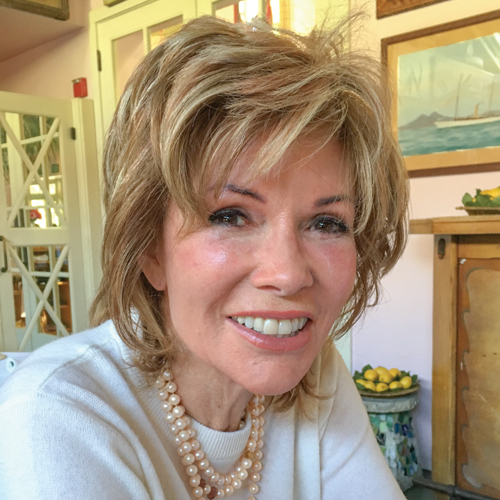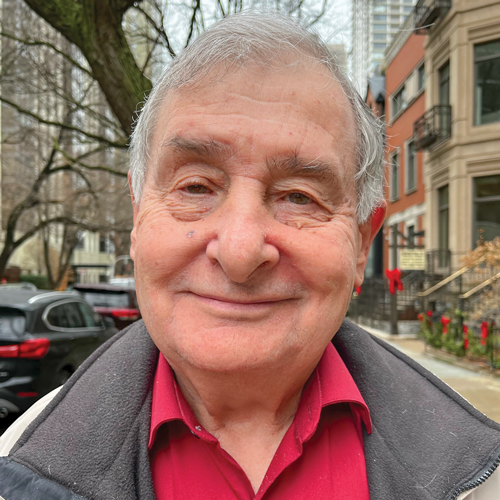The World Tribune sat down with SGI-USA Many Treasures Group representatives Matilda Buck and Guy McCloskey to discuss the true meaning of friendship. The Many Treasures Group comprises members 65 years and older.
World Tribune: Thank you, Matilda and Guy, for speaking with us. Toward the March Youth Peace Festivals, the SGI-USA youth are focused on building friendships and trust in their local communities. Having developed and sustained many relationships throughout your life, what does friendship mean to you?

Matilda Buck: I’m always reminded of a key lesson in Buddhism involving Shakyamuni and his disciple Ananda. In essence it teaches that advancing and striving together with good friends is not half but all of Buddhist practice.[1]
I see how learning to build relationships during my time of youth was invaluable. For me, the word comrade is my favorite. Because of my comrades in life, I was able to overcome many struggles and can continue to have hope. Genuine friendships are, I must say, life’s greatest treasure.

Guy McCloskey: I share the same sentiment about genuine friendships. What we leave behind are our relationships.
When it comes to relationships, there are things I have done that I wish I hadn’t. But that’s more the reason why I strive to treasure each person, just as Ikeda Sensei had—I don’t want to have any regrets. In this way, friendships are what allow us to conclude our life well.
WT: How did you develop this perspective on friendship?
Matilda: I thought it was the strangest thing when members reached out wanting to meet with me. But here I was, new to Buddhism and surrounded by this community of ordinary people, full of enthusiasm to speak with and care for anyone and everyone.
Even after having met Sensei in person and later, taking on responsibility as a women’s leader, I still didn’t fully understand the spirit of mentor and disciple or the Soka Gakkai spirit to treasure each person. But my seniors in faith supported me through all my doubts and ups and downs—I had to go through them. I gradually understood the depth of friendship and care embodied by Sensei.
Guy: I had been fortunate enough to meet with Sensei several times. On multiple occasions, I saw how he remembered details about someone in attendance and their family.
He always asked how my family was and addressed me in the most personable way. And when Doris and I lost our son, Brian, Sensei planted a tree in honor of his life at Makiguchi Memorial Hall in Hachioji, Japan and, later, at the Florida Nature and Culture Center and continued to offer us encouragement. This is the kind of example that I strive to live by.
WT: How does the importance of friendship evolve with time?
Matilda: The Many Treasures Group age can be a time when we question many things about our lives—and I feel this reality can be overlooked. Children and grandchildren are busy, we’ve had friends die, our careers and responsibilities begin to slow down, and we wonder: What’s this been all about? What can I look forward to?
Even with my many years of Buddhist practice and wonderful actual proof, there’s a certain depression and anxiety that can get a hold of me. And because I’ve overcome many struggles, it’s easy to think that I can figure it out on my own. I hesitate to reach out to others, and I end up suffering alone.
As Nichiren Daishonin writes, “A person of considerable strength, when alone, may fall down on an uneven path.”[2] I am so grateful to have friends in faith. Sometimes it’s a senior in faith that can help me see a different perspective, sometimes it’s a longtime comrade with a shared history and experience where I can just let my hair down. In telling and being heard, it establishes a commonality that is restorative.
WT: How do you build friendships that last?
Guy: I believe it comes down to whether we care about the other person and make the effort to stay connected—even if it’s a one-sided effort.
For example, I make it a point to remember people’s birthdays and their kids’ names. I’ll send digital New Year’s cards to everyone. Our home is always open for anyone visiting town; and if my wife, Doris, and I are traveling, we make it a point to reach out to whomever is nearby. With friends in different parts of the world, we’ll have a Zoom “cooking with friends” session to prepare and enjoy a meal together virtually.
Sure, people have cut me off. But I am persistent—probably more than they are. Second Soka Gakkai President Josei Toda has said, “We can substitute courage for compassion.”[3] We can be courageous in this regard.
WT: What do you think friendship looks like between the youth and Many Treasures Group members?
Matilda: Maybe it’s not quite the friendship that generally comes to mind. Within a district, it’s normal to see many generations coming together. For example, a district young men’s leader joined me in meeting with a young man I had introduced to Buddhism.
I think it’s more a generational effort to build a knowing of one another. If we can form bonds of respect and advance together toward our common goal of a more peaceful world, that energy and momentum will cause everyone in it to blossom just a little bit more.
I believe it all comes down to opening myself up first, allowing others, regardless of their age, to open up, too. Together, we create the environment where people feel and see the humanity in one another.
Guy: In many instances, Sensei has given guidance on how seniors in faith need to be models for our younger generation. For example, he wrote:
The first thing is to have a spirit of gratitude and a dedication to kosen-rufu for as long as you live, all the while continuing to strengthen your faith. …
Otherwise, everything you’ve pledged, determined and said to others so far will be for naught. If they see you’ve given up, your juniors will lose heart and become dejected, and that may cause them to lose faith in Buddhism. As Nichiren Daishonin writes: “To accept is easy; to continue is difficult. But Buddhahood lies in continuing faith.”[4] Let’s make sure to keep the flame of faith burning brightly till the very end.[5]
That’s why, to this day, I don’t stop in my efforts to reach out to people young and old in my neighborhood—on the street, in my building, at the grocery market, wherever. And I make it a point to write down each of their names in my phone and chant for them.
WT: What would you say is the key to any kind of relationship?
Matilda: It’s chanting daimoku. Recently, my beloved daughter-in-law has been struggling with a serious illness. She had to fight so hard during the treatments that when it concluded, her body and will temporarily shut down. No one in the family or the nursing team could compel her to do what was necessary to advance.
When the doctor explained she had reached a critical juncture in the path to full recovery, I felt we reached the point where it came down to my daimoku. That night, I chanted with fierce resolve that there had to be a change immediately.
The next day, a nurse—who has been a family friend for over 50 years—took charge. She was able to pierce through my daughter-in-law’s resistance and revive her spirit, putting her back on the path to recovery.
That night, I chanted with the deepest appreciation for this timely and spectacular benefit. I remembered that this nurse’s sister was someone I sponsored to receive the Gohonzon 50 years ago. Sadly she had died early in life. Every morning and evening since, I offered prayers for her life. I believe this nurse—her sister—is a response to that daimoku.
Guy: I agree with Matilda. Every day I chant for a list of people; and this list has grown to over 500 people, their families and kids. There can be gaps where I fall out of touch with someone, but we can remain connected through my daimoku for them.
In a recent World Tribune study article about quantum entanglement, it explained how we are truly interconnected, regardless of distance.[6] It’s true. And I’ve seen again and again the impact of our determination in this interconnectedness. Some people respond after decades, a relationship that once faded can reemerge in a crucial moment—friendship can live on in our daimoku.
March 8, 2024, World Tribune, pp. 6–7
References
- See The Wisdom for Creating Happiness and Peace, part 3, revised edition, pp. 105–07. ↩︎
- “Three Tripitaka Masters Pray for Rain,” The Writings of Nichiren Daishonin, vol. 1, p. 598. ↩︎
- The Teachings for Victory, vol. 7, p. 114. ↩︎
- “The Difficulty of Sustaining Faith,” WND-1, 471. ↩︎
- The New Human Revolution, vol. 25, pp. 128–29. ↩︎
- See Jan. 19, 2024, World Tribune, p. 10. ↩︎
You are reading {{ meterCount }} of {{ meterMax }} free premium articles

